#megumi shirakawa
Explore tagged Tumblr posts
Text
And that sudden observation is, (I doubt I'm the only one to catch on to this) not the fact it is easy to overlook these two as actual active DATS members.




All the source material in the world, at their hands and the TCG still got it wrong!

I suppose I can understand the confusion, you'd expect the digivice to match their Pawnchessmon colour but that's the quirk about them, they're opposite instead.

#miki kurosaki#digimon#megumi shirakawa#digimon savers#dats#digimon data squad#digimon tcg#tcg error#late observation#Pawnchessmon
61 notes
·
View notes
Text






Digimon Savers Music CD Covers
DIGIMON SAVERS MUSIC CD ALBUMS
1st pic = Gouing! Going! My Soul!! (Single) (NECM-12123), released on May 31, 2006
2nd pic =One Star (Single) (NECM-12124), released on May 31, 2006
3rd pic = Believer (Single) (NECM-10047), released on June 28, 2006
4th pic = Digimon Savers Original Soundtrack (NECA-30166), released on August 2, 2006
5th pic = Digimon Savers Best Hits + Character New Songs (NECA-30183), released on April 18, 2007
6th pic = Digimon Savers Flash Back! (NECM-30232), released on August 1, 2008
#Digimon Savers#digimon data squad#Digimon#Masaru Daimon#marcus damon#Agumon#agumon (savers)#daimon masaru#Gaomon#Thoma H. Norstein#thomas h norstein#tohma norstein#Yoshino Fujieda#Lalamon#fujieda yoshino#Ikuto Noguchi#keenan crier#noguchi ikuto#Falcomon#music cd covers#music cds#cd covers#too many to tag#Megumi Shirakawa#Miki Kurosaki#Kudamon#Satsuma Rentarou#richard sampson
26 notes
·
View notes
Text













#digimon tcg#digimon 2020#BT13#BT13-094#BT13-095#BT13-096#BT13-097#BT13-098#BT13-099#BT13-100#BT13-101#BT13-102#BT13-103#Tamer#Tamer Card#Kristy Damon#Marcus Damon#Homer Yushima#Thomas H Norstein#Thomas Norstein#Richard Sampson#Yoshino Fujieda#Akihiro Kurata#Keenan Crier#Miki Kurosaki#Megumi Shirakawa#Alt Art#Pre-Release#PreRelease#Digimon Savers
2 notes
·
View notes
Text





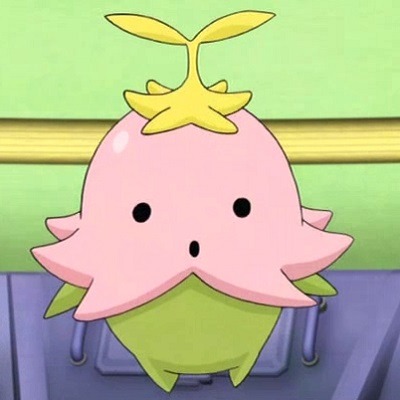

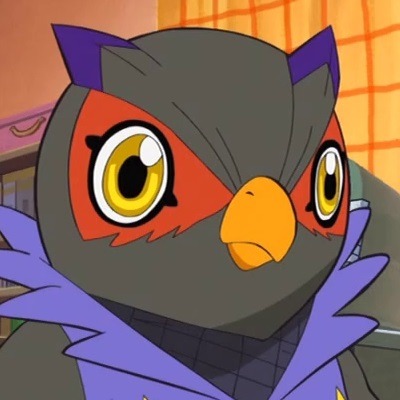


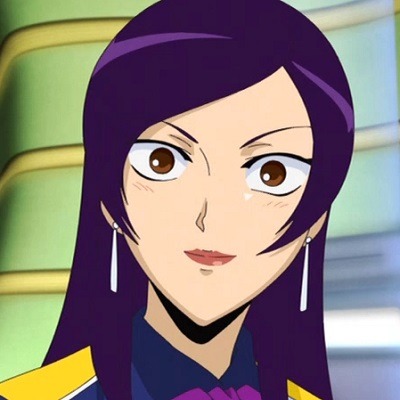
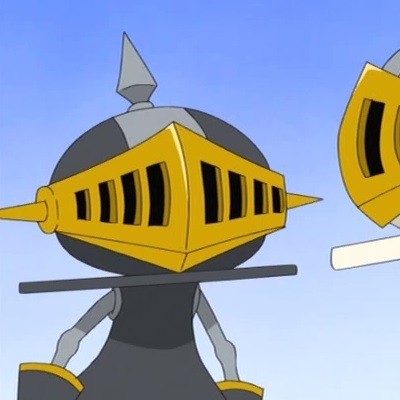

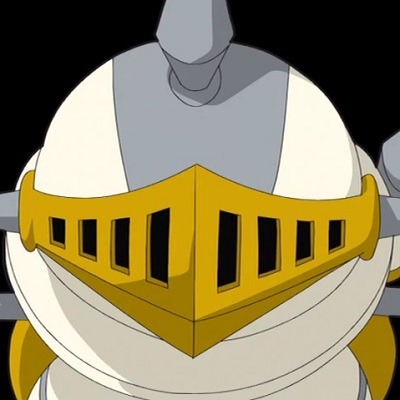


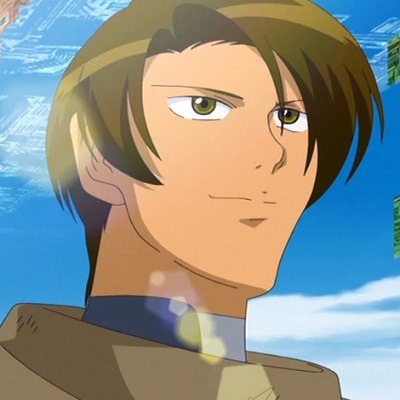

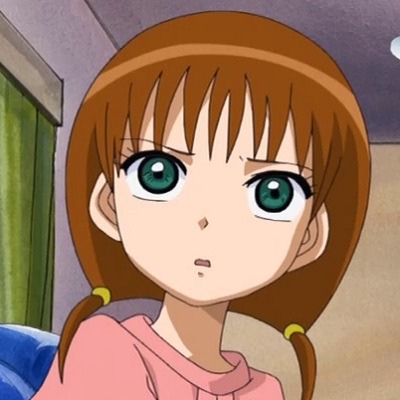
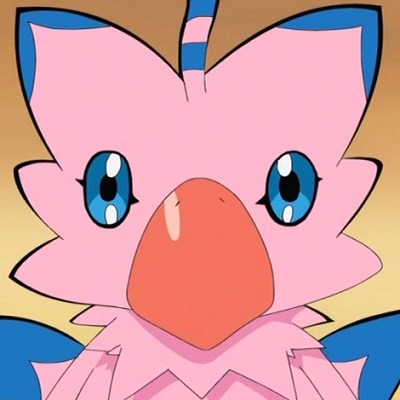
The Humans and their Digimon Partners in Digimon Savers/Data Squad picspam
(Japanese and English dub names)
Masaru Daimon / Marcus Damon and Agumon
Tohma H Norstein / Thomas H Norstein and Gaomon
Yoshino Fujieda / Yoshi and Lalamon
Ikuto Noguchi / Keenan Crier and Falcomon
Satsuma Rentarou / Richard Sampson and Kudamon
Miki Kurosaki and Pawnchessmon (Black)
Megumi Shirakawa and Pawnchessmon (White)
Hiroshi Yushima / Homer Yushima and Kamemon
Suguru Daimon / Spencer Damon and BanchoLeomon
Chika Daimon / Kristy Damon and Piyomon/Biyomon
#Digimon Savers#Masaru Daimon#Thomas H Norstein#tohma h norstein#Yoshino Fujieda#Ikuto Noguchi#Satsuma Rentarou#Miki Kurosaki#Megumi Shirakawa#Hiroshi Yushima#Suguru Daimon#Chika Daimon#digimon data squad#Digimon#picspam
38 notes
·
View notes
Text
jumpscare ladies
HERE COME THE JUMPSCARE LADIES

0 notes
Text





Digimon Evolution Lines 81/∞
Pawn Spear! PawnChessmon (White) reached Ultimate-level in its evolution debut in the DigiWindow. PawnChessmon (Virus-attribute) features in Digimon Savers as partner to Shirakawa Megumi and a member of DATS. Note: PawnChessmon evolves from Puttimon in Digimon Story: Sunburst & Moonlight.
Stages: LV1: Puttimon LV2: Cupimon LV3: PawnChessmon (White) LV4: KnightChessmon (White) LV5: BishopChessmon (White) LV6: KingChessmon
Artwork by Sanosuke Sakuma from the Digimon Card Game (Puttimon, Cupimon) and by Bandai from the Digimon Reference Book.
#digimon#digimon savers#digimon data squad#digimon card game'#puttimon#cupimon#pawnchessmon#knightchessmon#bishopchessmon#kingchessmon
4 notes
·
View notes
Text
favourite anime and anime characters part 2
Isekai Izakaya Nobu- Shinobu Senke
Isekai Quartet
Itazura na Kiss-Kotoko Aihara
Iwa Kakeru- Konomi Kasahara
Ixion Saga DT
Izzeta The Last Witch- Izetta
Japan Sinks 2020
Jellyfish Can’t Swim in The Night-Mahiru Kouzuki/Yoru Umitsuki
Jikkenhin Kazoku-Ashisu
Jikuu Tantei Genshi-kun-Sora Yamato
Jingai-san no Yome
Jinsei-Fumi Kujou
Jitsu Wa Watashi Wa-Youko Shiragami
JK Meshi
Joker Game
Jojo's Bizarre Adventure-Trish Una
Jormungand- Koko Hekmatyar, Jonah
Joshikausei
Joshiraku- Gankyou Kurubiyutei
Jouran-Sawa Yukimura
Juubei-chan-Jiyuu Nanohara
Jujutsu Kaisen-Nobara Kugisaki
Junji Ito Collection
Junji Ito Maniac
Just Because
Juuni Senshi Bakuretsu Eto Ranger
Juuni Taisen
Juusenshi Gulkeeva
Juushinki Pandora- Queenie Yoh
K- Kuroh Yatogami, Neko
K-On- Yui Hirasawa
Kabaneri of The Iron Fortress-Ayame Yomogawa
Kabukibu-Maruko Janome
Kabukichou Sherlock-Mary Morstan
Kado-Kanata Shinawa
Kage Kara Mamoru-Yamame Hattori
Kageki Shoujo-Sarasa Watanabe
Kaguya-sama – Kaguya Shinomiya
Kakegurui-Yumeko Jabami
Kakuriyo no Yadomeshi- Aoi Tsubaki
Kamisama Kazoku-Tenko Kamiyama
Kashigoto- Hime Gotou
Kaiji
Kaijuu No.8-Kikoru Shinomiya
Kaina of the Great Snow Sea-Ririha
Kaitou Tenshi Twin Angel
Kanamemo-Kana Nakamachi
Kamen No Maid Guy-Naeka Fujiwara
Kamichama Karin
Kamierabi-Honoka Sawa
Kamigami No Asobi-,Yui Kusanagi
Kamikatsu-Alural
Kamisama Dolls
Kamisama Kiss- Nanami Momozono
Kampfer- Akane Mishima
Kandagawa Jet Girls-Rin Namiki
Kannagi -Nagi/Kannagi
Kannazuki No Miko- Himeko Kurusugawa
Kanon-Ayu Tsukimiya
Kanokon- Chizuru Minamoto
Kantai Collection-Fubuki, Hibiki, Shigure
Karakai Jouzu no Takagi-san-Takagi-san
Karakuri Circus- Shirogane Saiga/Eleonore
Kare Kano-Yukino Miyazawa
Karin: Chibi Vampire- Karin Maaka
Karneval- Gereki
Kashimashi-Hazumu Osaragi
Katanagatari- Togame
Kawagoe Boys Sing
Kawai Complex Guide To Manors And Hostel Behaviour-Ritsu Kawai
Kaze No Stigma-Ayano Kannagi
Keep Your Hands Off Eizoukan
Keijo-Non Toyoguchi
Kekkaishi
Kemono Friends-Serval
Kemono Jihen-Kon
Kemono Michi- Shigure
Kemurikusa-RIn
Ken En Ken
Kengan Ashura
Kenka Bancho
Kenichi: Mightiest Disciple- Miu Furinji
Key the Metal Idol-Tokiko “Key” Mima
Kiba-Roya
Kiddy GirlAND- Ascoeur
Kiddy Grade- Eclair, Lumiere
Kids On The Slope
Kimetsu no Yaiba- Nezuko Kamado
King of Prism
Kiitarou’s Youkai Picture Diary
Kill La Kill
Kill Me Baby- Sonya
Killing Bites- Hitomi Uzaki
Kimagure Orange Road-Manami Kasuga
Kimi Ga Aruji De Shitsuji Ga Ore De-Yume Kuonji
Kimi Ga Nozomu Eien-Haruka Suzumiya
Kimi Ni Todoke-Sawako”Sadako”Kuronuma
Kimi To Boku
KimiKiss-Yuumi Hoshino
Kimizero-Runa Shirakawa
Kindaichi Case Files-Miyuki Nanase
King’s Game
King’s Raid- Cleo
Kingdom
Kin-Iro Mosaic-Shinobu Omiya
Kinnikuman
Kino’s Journey
Kinokoinu
Kirby: Right Back At Ya
KissxSis- Miharu Mikuni
Kiss Him Not Me- Kae Serinuma
Kiyo In Kyoto-Kiyo
Kiznaiver-Nico Niiyama
Kizuna no Allele-Chris
Knights and Magic- Adeltrud “”Addy” Olter
Knights Of Sindonia-Shizuka Hoshijiro
Kobato-Kobato Hanato
Kochouki-Oichi
Kodomo no Jikan-Mimi Usa
Kodomo no Omocha
Koi Kaze-Nanoka Kohinata
Koi wa Ameagari no You ni – Akira Tachibana
Koikimo-Ichika Arima
Koihime Muso- Kan'u Unchou/Aisha
Kokkoku- Juri Yukawa
Kokoro Connect
Kokoro Library-Kokoro
Komi Can’t Communicate-Shouko Kpmi
Komori-san Can't Decline
Kono Oto Tomare – Satowa Hasuki
Konohana Kitan-Yuzu
KonoSuba-Megumin
Kotaro Lives Alone
Kotoura-san- Yuriko Mifune
Koutetsu Sangokushi
Kubo Let Me Be Invisible-Nagisa Kubo
Kujibiki Unbalance
Kuma Kuma Kuma Bear- Yuna
Kumamiko-Machi Amayadori
Kurakon-Shisei Houjou
Kure-nai
Kurokami-Kuro
Kuroko's Basket-Satsuki Momoi
Kuromukuro-Yukina Shirahane
Kurozuka
Kyoran Kazoku Nikki-Kyoka Midarezaki
Kyoto Teramachi Sanjou no Holmes-Aoi Mashiro
Kyou Kara Maou
Kyou no Go no Ni-Megumi Hidaka
Kyousougiga-Koto
La Corda d'Oro-Azuma Yunoki,Kahoko Hino,Kanade Kohinata[LCD Blue Sky]
La Storia Della Arcana Famiglia-Felicita
Ladies Versus Butlers-Tomomi Saikyou
Lagrange-Muginami
Laid Back Camp- Nadeshiko Kagamihara, Rin Shima
Lamune-Nanami Konoe
Lance N' Masques-Yufeng
Land of the Lustrous
Lapis Re:Lights-Ashley
Last Exile-Lavie Head, Fam Fan Fan(LEFtSW)
Last Period- Choco
Laughing Under The Clouds-Botan
Layton Mystery Tanteisha- Katrielle Layton
LBX Girls-Suzuno
Le Chevalier D'Eon
Legend of the Galactic Heroes
Legend of Legendary Heroes- Ferris Eris
Legend of Mana The Teardrop Cystal
Les Misérables Shoujo Cosette
Let This Grieving Soul Retire-Tino Shade
Lets Make a Mug Too-Mika Kukuri
Level 1 Demon Lord and One Room Hero-Zenia
Level E
Levius-Natalia Garnet
Liar Liar-Sarasa Saionji/Rina Akabane
Lilpri-Ringo Yukimori
Life Lessons with Uramichi Oniisan-Utano Tadano
Life with an Ordinary Guy who Reincarnated into a Total Fantasy Knockout- Hinata Tachibana
Linebarrels Of Iron- Emi Kizaki
Listen To Me Girls, I Am Your Farther- Sora Takanashi
Listeners-Mu
Little Busters-Rin Natsume
Little Witch Academia- Atsuko “Akko” Kagari
Log Horizon-Akatsuki, Shiroe
Locodol-Nanako Usami
Love All Play
Love and Lies-Misaki Takasaki
Love Is Invisible by Twins-Naori Jinguuji
Loner Life in Another World
Long Riders-Ami Kurata
Lord Marksman And Vanadis-Eleonora “Elen” Viltaria
Lord of Vermillion- Tsubaki Manazuru
Lost Song-Rin
Lost Universe
Lost Village-Lion
Love After World Domination-Desumi Magahara
Love Com- Risa Koizumi
Love,Election And Chocolate-Nozomi Edagawa
Love Flops-Amelia Irving
Love Get Chu-Momoko Ichihara
Love,Chunibyo And Other Delusions- Rikka Takanashi
Love Hina-Shinobu Maehara, Motoko Aoyama, Kaolla Su
Love of Kill-Chateau Dankworth
Love Lab- Suzune Tanahashi
Love Live- Honoka Kosaka, Ruby Kurosawa[Love Live Sunshine], Rina Tennoji(Love Live Nijigasaki),Kanon Shibuya(Love Live Superstar)
Love Love- Natsumi Yagami
Love Kome
Lovely Idol
Loving Yamada at Lv999-Akane Kinoshita
L/R-Noelle Ardelade
Luck & Logic-Athena, Liones Yellstratova
Lucky Star- Konata Izumi
Lucifer and the Biscuit Hammer-Samidare Asahina
Luna Legend Tsukihime
Lupin The Third-Fujiko Mine
Lycoris Recoil- Chisato Nishikigi
M3 The Black Metal
Maburaho-Yuna Miyama
Macademi Wasshoi-Suzuho Hasegawa
Machiko And Hatchin
Macross-Freyja Wion[Macross Delta]
Made In Abyss-Riko
Madome-Nephelia
Madou Soshi
Maesetsu-Fubuki Kitakaze
Magatsu Wahrheit-Irma
Magi- Alibaba Saluja, Morgiana
Magipoka-Liru
Magic Knight Reyearth
Magic Kyun Renaissance-Kohana Aigasaki
Magic Maker
Magic Of Stella-Tamaki Honda
Magical Canan-Chhaya Hiiragi
Magical Circle Guru Guru-Kukuri
Magical Destroyers-Anarchy/Kirara Akabane
Magical Girl Lyrical Nanoha-Nanoha Takamachi
Magical Girl Ore – Sakuyo Mikage
Magical Girl Site- Aya Asagiri
Magical Girl Spec Ops Asuka-Kurumi Mugen
Magical Girl Raising Project-Ripple/Kano Sazanami
Magical Senpai-Senpai
Magical Shopping Arcade Abenobashi
Magical Somera-chan
Magical Warfare-Mui Aiba
Magikano-Ayumi Mamiya
Magilimiere Co. Ltd.
MahoNare-Kurumi Mirai
Mahoraba-Kozue Aoba
Mahoromatic-Mahoro Andou
Mahou Shoujo Nante Mou Ii Desukara
Mahou Shoujo Naria Girls
Mai Hime-Mai Tokiha
Mai Otome-Arika Yumemiya
Maid-Sama- Misaki Ayazawa
Maison Ikkoku- Kyoko Otonashi
Majestic Prince-Tamaki Irie
Majikoi Oh! Samurai Girls- Miyako Shiina
Majimoji Rurumo-Rurumo
Major-Kaoru Shimizu
Malevolent Spirit-Botan Nagatsuki
Makai Ouji: Devils And Realist
Maken-Ki- Inaho Kushihachi
Makeine-Anna Yanami
Mama wa Shougaku 4 Nensei
Mamoru-kun ni Megami no Shukufuku wo-Ayako Takasu
Management of a Novice Alchemist-Sarasa Feed
Manyuu Hikenchou- Kaede
Marchen Awakens Romance-Snow
Marchen Madchen-Hazuki Kagimura
Maria-sama ga Miteru-Yumi Fukuzawa
Maria Holic-Kanako Miyamae
Maria The Virgin Witch-Maria
March Comes In Like A Lion-Hinata Kawamoto
Marginal#4
Marmalade Boy
Manaria Friends
Mars Red-Aoi Shirase
Martian Successor Nadesico-Yurika Misumaru,Ruri Hoshino
Master Keaton
Marvel Disk Wars
Masamune-kun’s Revenge-Yoshino Koiwai
Mashle-Lemon Irvine
Matoi The Sacred Slayer-Matoi Sumeragi
Matchless RaijinOh
Maoyu- Maou
Mawaru Penguindrum
Mayo Chiki- Kanade Suzutsuki
Mayoi Neko Overrun-Nozomi Kiriya
Mayonaka Punch-Live
Mazica Party
Mechanical Arms
Medabots
Meiji Gekken-Senri Kuroki
Meiji Tokyo Renka-Mei Ayaziki
Medaka Box- Medaka Kurokami
Medaka Kuroiwa Is Impervious to my Charms-Mona Kawai
Medalist-Inori Yuitsuka
Megalo Box
Megaman NT Warrior
Meganebu
Megaton Musashi-Arshem
Mekakucity Actors
Melody of Oblivion
Merc Storia
Mermaid Forest-Mana
Metallic Rouge-Naomi Ortmann
MF Ghost-Ren Saionji
Miami Guns- Yao Sakurakouji
Midnight Occult Civil Servants
Midori Days- Midori Kasugano
Migi & Dali
Mikagura School Suite-Eruna Ichinomiya
Mikan Enikki
Million Arthur- Thief Arthur
Million Doll
Minami Kamakura High School Girls Cycling Club-Hiromi Maiharu
Minamike-Kana Minami
Mingling With a Priest
Mierukochan-Miko Yotsuya
Miracle Girls
Miss Caretaker of Sunoharasou-Ayaka Sunohara
Miss Bernard Said
Miss Kobayashi’s Dragon Maid-Tohru
Miss Kuroitsu from the Monster Development Department-Touka Kuroitsu, Akashic. Wolf Bete
Miss Monochrome
Miss Shachiku and the Little Baby Ghost-Yuurei-chan
Mission: Yozakura Family-Mutsumi Yozakura
Mitsuboshi Colors-Kotoha
Mitsudomoe-Aiko Kuriyama
Mix- Haruka Ooyama
MM-Arashiko Yuuno
Mob Psycho 100
Mobkara-Sylphy
Mobile Suit Gundam- Tieira Erde[Gundam 00], Lacus Clyne[Gundam Seed/Seed Destiny], Kudelia Aina Bernstein[Gundam IBO],China Kousaka[GBF],Romary Stone/Asuno[Gundum AGE]Mirai Kamiki[GBFT], Aya Fujisawa/Ayame[GBD], Shakti Kareen[MSVG], Suletta Mercury[MSG TWFM]
Modern Magic Made Simple-Koyomi Morishita
Moetan-Ink Nijihara
Mokke
Momo Kyun Sword-Momoko
Momentary Lily
Momokuri-Yuki Kurihara
Mon Colle Knights
Monochrome Factor
Monogatari- Tsubasa Hanekawa
Monster
Monster Girl Doctor-Saphentite Neikes
Monster Hunter Stories
Monster Musume-Miia
Monthly Girls' Nozaki-kun-Chiyo Sakura
Moonlight Mile
More Than a Married Couple But Not Lovers-Akari Watanabe
Moriarty the Patriot
Moribito-Balsa
Morita-san Wa Mukuchi
Mouryou No Hako
Mouse
Morose Mononokean-Zenko Fujiwara
Mother of the Goddess’s Dormitory-Sutea Koroya
Mr Love
Mr Villain’s Day Off
Ms.Koizumi Loves Ramen Noodles-Koizumi
Ms. Vampire Who Lives in My Neighborhood- Sophie Twilight
Muhyo & Roji’s Bureau of Supernatural Investigation
Murai in Love-Ayano Tanaka
Mushi Uta-Shiika Anmoto
Mushibugyo-Kuroageha
Mushishi
Mushoku Tensei-Roxy Migurdia
Mushrambo
Muteki Kanban Musume-Megumi Kannazuki
Mutenking The Dancing Hero
Muv-Luv-Yui Takamura[MuvLuv Alternative Total Eclipse], Katia Waldheim[Shswarzesmarken], Sumika Kagamu[MuvLuv Alternative]
My Bride Is A Mermaid- Sun Seto
My Clueless First Friend-Akane Nishimura
My Daemon
My Daughter Left the Nest and Returned an S Ranked Adventurer-Miriam
My Deer Friend Nokotan- Torako Koshi
My Dress Up Darling-Marin Kitagawa
My First Girlfriend Is a Gal-Nene Fujinoki
My Girlfriend Is Shobitch-Akiho Kousaka
My Happy Marriage-Miyo Saimori
My Hero Academia-Ochako Uraraka
My Home Hero-Reika Tosu
My Isekai Life-Dryad
My Instant Death Ability is So Over Powered-Tomochika Dannoura
My Little Monster-Asako Netsume
My Life as Inukai-san’s Dog-Usagi Tsukishiro
My Love Story-Rinko Yamato
My Master Has No Tail-Mameda
My Mental Choices Are Completly Interfering With My School Romance Comedy-Ouka Yuuouji
My Neighbour Seki
My New Boss is Goofy
My One Hit Kill Sister-Maya Ikusaba
My Roommate is a Cat
My Senpai is Annoying-Futaba Igarashi
My Sister My Writer
My Stepmom’s Daughter is My Ex-Yume Irido
My Teen Romantic Comedy SNAFU- Yui Yuigahama
My Tiny Senpai-Shiori Katase
My Unique Skill Makes Me OP Even at Level 1-Emily Brown
My Wife Has No Emotion-Mina
My Wife Is The Student Council President-Ui Wakana
Myriad Colors Phantom World-Reina Izumi
Myself Yourself-Aoi Oribe
Mysterious Disappearance-Oto Adashino
Mysterious Girlfriend X- Mikoto Urabe
Mysterious Joker- Diamond Queen
Mythical Detective Loki Ragnarok-Mayura Daidouji
Mystic Archives Of Dantalian-Dalian
Nabari No Ou-Raimei Shimizu
Nadia
Nagasarete Airantou- Suzu
Nagi-Asu-Manaka Mukaido
Najica Blitz Tactics- Lila
Nakaimo-Konoe Tsuruma
Nanbaka-Momoko Hyakushiki
Nana-Nana Osaki
Nana Maru San Batsu-Mari Fukami
Nanaka6/17-Nanaka Kirisato
Nanana’s Buried Treasure-Nanana Ryuugajou
Nanatsuiro Drops-Sumomo Akihime
Namu Amida Butsu
Narenare-Suzuha Obunai
Naruto-Hinata Hyuga, Sumire Kakei(Boruto)
Natsu No Arashi-Yayoi Fushimi
Natsuiro Kiseki –Yuka Hanaki
Natsume's Book Of Friends- Jun Sasada
NazeBoku-Rinne
Nazotokine
Needless- Adam Blade, Eve Neuschwanstein
Negative Positive Angler-Hana Ayukawa
Negima-Nodoka Miyazaki, Karin Yuuki[UQ Holder]
Nekogami Yaoyorozu-Mayu
Nekopara-Chocola
Neo Ranga
Neon Genesis Evengelion
Near Death!! Ekoda-chan
Netsuzou Trap
Neuro: Supernatural Detective- Yako Katsuragi
New Game-Aoba Suzukaze
Nier Automata Ver1.1a-2B
Nichijou
Night Head 2041
Night Head Genesis
Night Raid 1931-Yukina Sonogi
Night Wizard-Elis Shihou
Nijiiro Days
Nil Admirari no Tenbin- Tsugumi Kuze
Nina the Stary Bride-Nina
Ningen Fushin-Curran
Ninjala-Lucy
Ninja Kamui
Ninja Girl And Samurai Master
Ninja Nonsense- Shinobu,Miyabi
Ninja Scroll
Ninja Slayer From Animation
Nisekoi- Kosaki Onodera
No Game No Life- Sora,Shiro
No Guns Life-Mary Steinberg
No Longer Allowed in Another World-Tama
Noblesse- Seira J. Loyard
Nobunagun- Shio Ogura
Nobunaga Conserto
Nobunaga-sensei no Osanazuma
Nobunaga The Fool- Jeanne Kaguya D'Arc/Ranmaru Mori
Nodame Cantabile-Megumi Noda
Noein
Nogizaka Haruka No Himitsu-Haruka Nogizaka
Non Non Biyori-Komari Koshigaya
Nora, Princess and Stray Cat
Noragami-Hiyori Iki,Yato
Norn9-Koharu
Nourin-Ringo Kinoshita/Yuka Kusakabe
Now and Then Here and There
Number24
Null Peta
Nura: Rise Of The Yokai Clan- Tsurara Oikawa/Yuki Onna
Nurse Angel Ririka SOS
Nurse Witch Komugi-chan-Kokona Saionji[NWK R]
Nyaruko-Nyaruko
Nyan Koi-Kaede Mizuno
Nyanko Days
O Maidens in Your Savage Season-HItoha Hongou
Oblivion Battery
Occult Academy-Maya Kumashiro
Occult:Nine-Ryoka Narusawa
Oda Cinnamon Nobunaga-Ichiko Oda
Odd Taxi
Ojisan And Marshmallow
Okami-san And Her Seven Companions- Ryoko Okami
Okami Kakushi-Nemuru Kushinda
Okitsura-Hina Kyan
Okoshiyasu Chitose-chan
Okusama Wa Joshikousei-Asami Onohara
Omae wa Mada Gunma wo Shiranai
Omamori Himari-Himari Noihara
Omiai Aite wa Oshiego Tsuyoki na Mondaiji
One Outs
One Punch Man
One Piece-Carrot,Yamato
One Week Friends-Kaori Fujimiya
Onee-Chan Wa Kita
Onihei
Ongaku Shoujo- Hanako Yamadaki
Onmyouji
Onsen Yousei Hakone-chan
Oooku
Ooya-san Wa Shishunki
Orb
Oreimo- Ruri Goko/Kuroneko
Orenchi No Fueo Jijo
OreSuki- Aoi Hinata
Oreshura-Himeka Akishino
Orient-Tsugumo Hattori
Oruchuban Ebichu
Otome Youkai Zakuro-Susukihotaru
One Room
OniiAi-Akiko Himenokouji
Onimai-Mahiro Oyama
Onigiri
Opus Colors
Orange-Naho Takamiya
Osake wa Fuufu ni Natte Kara
Osamake-Kuroha Shida
Oshi no Ko-Kana Arima
Osomatsu-kun-Totoko
Otaku Elf-Koito Koganei
Otherside Picnic-Sorao Kamikoshi
Otogi Juushi Akazukin
Otome wa Boku ni Koishiteru
Our Last Crusade or the Rise of a New World-Mismis Klass
Ouran High School Host Club- Kyoya Otari
Outbreak Company-Myucel Foaran
Outburst Dreamer Boy-Mizuki Hijiri
Outlaw Star-Melfina
Our Home's Fox Deity-Misaki Sakura
Over Drive
Overdrive Girl 1/6-Nona
Overlord-Albedo
Overtake-Alice Mitsuzawa
Ozmafia
Pan De Peace
Pandora Hearts- Alice
Pandora In The Crimson Shell-Clarion
Pani Poni Dash-Himeko Katagiri
Parallel World Pharmacy- Charlotte “Lotte” Soller
Paradise Kiss-Yukari “Caroline” Hayasaka
Paranoia Agent
PaRappa the Rapper
Pastel Memories
Panty And Stocking, Panty, Stocking
Paradox Live
Parasyte-Satomi Murano
Peacemaker Kurogane-Saya
Peach Boy Riverside-Sally/Saltherine Aldarake
Peeping Life TV
Penguin Musume- Sakura “Penguin” Nankyoku
Persona 4 The Animation- Yu Narukami
Persona 5 The Animation-Futaba Sakura
Persona:Trinity Soul-Kanaru Morimoto
Pet
Pet Girl Of Sakurasou- Mashiro Shiina
Peter Grill and The Philosopher’s Time
Phantasy Star Online 2 -Rina Izumi[PSO2 TA], Melrandia[PSO2 EO]
Phantom: Requiem For The Phantom- Zwei/ Reiji Azuma, Ein/Eren
Phantom of the Idol-Asahi Mogami
Phantom of Twilight- Baileu Ton
Phantom Thief Jeanne-Maron Kusakabe
Phi Brain
Photo Kano-Rina Yunoki
Piacevole
Piano no Mori
Pilot's Love Song-Claire Cruz/Nina Viento
Ping Pong Club
Planetarian
Planet With- Ginko Kuroi
Plastic Memories-Isla
Platinum End-Nasse
Play It Cool Guys
Please Teacher/Twins-Mizuho Kazami, Miina Miyafuji[Twins]
Please Tell Me Galko-chan
Plunder-Hina
Plus Sized Elf
Pokemon-Koharu(Pokemon Journeys), Liko(Pokemon Horizons)
Police in a Pod-Mai Kawai
Pon no Michi-Pai Kawahigishi
Pop Team Epic
Popotan- Ai
Popolocrois
Possibly the Greatest Alchemist of All Time
Potemayo-Mikan Natsu
Power of Hope
Powerpuff Girls Z-Momoko Akatsutsumi
Precure- Makoto Kenzaki/Cure Sword(Doki Doki Precure), Ageha Hijiri/Cure Butterfly(Soaring Sky Precure)
Pretty Boy Detetive Club-Mayumi Dojima
Price of Smiles- Yuuki Soleil
Prima Doll-Karasuba
Prince Of Stride-Nana Sakurai
Princess Connect-Kokoro Natsume/Kokkoro
Princess Jellyfish- Tsukimi Kurashita
Princess Lover-Charlotte Hazelrink
Princess Nine-Ryo Hayakawa
Princess Princess
Princess Principal- Ange
Princess Resurrection-Reiri Kamura
Princess Tutu-Ahiru
PriPara-Sophie Hojo. Rinka Aoba(Kiratto Pri Chan)
Prism Ark- Bridget
Prison School-Chiyo Kurihara
Problem Children Are Coming From Another World, Aren't They?- Black Rabbit
Project Scard-Azusa Yuki
Promise of Wizard
Protocol: Rain-Yuu Saegusa
Pseudo Harem-Rin Nanakura
Psychic Detective Yakumo-Haruka Ozawa
Psycho Pass- Akane Tsunemori, Shinya Kogami
Puella Magi Madoka Magic
Pumpkin Scissors- Alive L. Malvin
Punch Line- Mikatan Narugino
Puniru is a Cute Slime-Puniru
Pupipou
PuraOre-Yuu Kiyose
Puzzle and Dragons X- Garnet
Qualidea Code-Canaria Utara
Quality Assurance in Another World-Nikola
Quaser Of Stigmata-Tomo Yamanobe
Queen's Blade-Tomoe
R-15-Fukune Narukara
Radiant-Melie
Rage Of The Bahamut-Amira, Nina Drango
Ragna Crimson-Leonica
Ragnarok the Animation-Yuufa
Rahzephon
Rail Wars-Haruka Koumi
Raimuiro Senkitan-Momen Sanada, Kasuri Hattori[Raimuiro Ryuukitan X]
Rainbow
Rainy Cocoa
Ranking of Kings
Ranma ½ -Ranma Saotome(female)
Ranpo Kitan
Rave Master- Elie
Raven of the Inner Palace-Liu Shouxue
Rascal Does not Dream of Bunny Girl Senpai
Re:Creators:Meteora Osterreich
Reign of the Seven Spellblades-Nanao Hibiya
Re-Kan-Hibiki Amami
ReMain
Re:Monster
Re:Stage-Mizuha Ichikishima
Re:Zero-Rem
Read or Die
Real Girl- Sumie Ayado
Reborn as a Vending Machine,I Now Wander the Dungeon-Lammis
Reborn to Master the Blade-Inglis “Chris” Eucus
Rec
Records of Grancest War-Siluca Meletes
Record of Lodoss War
Record of Ragnarök-Goll
Recorder And Ransell
Recovery of an MMO Junkie-Lily
Recently My Sister Is Unusual-Mitsuki Kanzaki
Red Data Girls-Izumiko Suzuhara
Red Cat Ramen-Tamako Yashiro
Red Garden
Redo of Healer-Setsuna
Regalia-Yuinshiel Asteria
Reincarnated as a Sword-Fran
Reikenzan
Release The Spyce
ReLife-Chizuru Hishiro
Remi,Nobody’s Girl
Renai Boukun- Akane Hiyama
Rent A Girlfriend-Ruka Sarashina
Rental Magica-Honami Takase Ambler
RErideD
Requiem of the Rose King
Restaurant To Another World-Aletta
Revenger
Revisions
Revolutionary Girl Utena
Remake Our Life-Aki Shino
Rewrite-Kagari
Rick and Morty The Anime
Riddle Story Of Devil-Haru Ichinose
Rideback-Rin Ogata
Rifle is Beautiful- Hikari Kokura
Rinkai-Izumi Itou
Rinne-Suzu
Rio-Rio Rollins Tachibana
Rising Impact
Rising of a Shield Hero-Raphtalia
Rizelmine-Rizel Iwaki
RobiHachi
Robotic:Notes-Akiho Senomiya
Rokka-Flamie Speeddraw
Rokudou’s Bad Girls-Ranna Himawari
Rokuhoudou Yotsuiro Biyori
Ro-Kyu-Bu-Tomoka_Minato
Rolling Girls-Nozomi Moritomo
Romeo X Juliet
Romantic Killer-Anzu Hoshino
Ron Kamonohashi’s Forbidden Deductions
Rosario + Vampire- Moka Akashiya,
Roshidere-Alisa Mikhaiovna Kujou/Alya
RPG Real Estate-Kotone Kazairo
Rozen Maiden- Shinku
Rumble Garandoll-Rin Akagi
Run For Money-Luna Nishinotouin
2 notes
·
View notes
Text
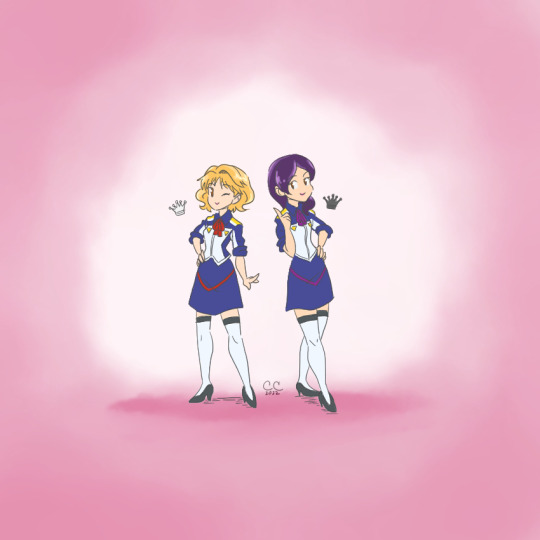
DigiWeek 2022, Day 6 (Challenge)
⬜️⬛️⬜️⬛️⬜️⬛️⬜️⬛️
For this @digiweek prompt, I really wanted to draw characters I’d never ever drawn before, and since I’m also trying to focus on characters who don’t get a lot of fanfic/fanart love, Megumi (left) and Miki (right) from Savers/Data Squad seemed like the perfect choice! Even though they don’t get a ton of screentime, they are both hugely important to the operation of DATS, and I think it’s sweet that they’re not only coworkers, but best friends. I also love their friendship with Yoshino, and I would totally read fanfic about them taking their chess-themed digimon (and maybe the rest of the DATS team!) out to karaoke. Their partners may evolve into a Bishop ♗ and a Rook ♜, but they are two Queens ♕♛.
55 notes
·
View notes
Photo










{DO NOT Copy, Use or re-post without Permission!} {Please Ask to Use!} {LIKES OK}


#mochizuki meiko#aoi shibuya#megumi shirakawa#mastemon#ophanimon#blacktailmon#ladydevimon#rasielmon#ranamon#koushirouizumi icons#koushirouizumi sappho icons#koushirouizumi sappho headcanons#koushirouizumi pride icon sets#koushirouizumi pride icons#koushirouizumi headcanons#koushirouizumi sappho hcs#(I Was In A Mood so I Made Some Icons because I Also wanted to finish cleaning up some of these transparents AAA)#(SERIOUSLY READ THE BANNERS BEFORE INTERACTING)#(Ranamon can be Frontier Ranamon or random Ranamons)#(LadyDevimon can be either Adv LadyDevimon or random LadyDevimons too and that also goes for her whole line there)#(but the Black Tailmon here is specifically ALSO referring to a certain OC Black Tailmon of mine whose story I STILL HAVEN'T GOTTEN TO)#(so until then have icons)#(Ophanimon too can be Frontier Ophanimon or random Ophanimons)
6 notes
·
View notes
Photo




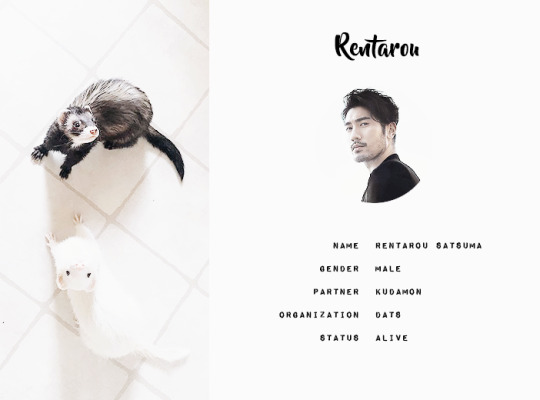



CHARACTER PROFILES
Digimon Savers
(insp.)
#digimon#digimon savers#digimon data squad#masaru daimon#thoma h. norstein#yoshino fujieda#ikuto noguchi#rentarou satsuma#hiroshi yushima#miki kurosaki#megumi shirakawa#homer yushima#richard sampson#keenan crier#yoshi fujieda#thomas h. norstein#touma h. norstein#marcus damon#animeedit#anime#edit#aesthetic#moodboard
51 notes
·
View notes
Photo

MEGUMI + MIKI ICONS
THIS ZIP FILE INCLUDES ; Megumi Shirakawa (102) [ download here ] Miki Kurosaki (78) [ download here ] Icons are free to use, free to edit, with or without credit just please don’t re-upload or claim as your own. Likes and reblogs are nice but not required. If you encounter a broken link please let me know and I’ll fix it! Buy me a Coffee
5 notes
·
View notes
Photo

54 notes
·
View notes
Photo




Special Delivery: more Poundmates
15 notes
·
View notes
Text
Categorizing digidestined kids based on their digimon partner "main" (with HUGE quotation) gimmick
No characters from "digimon ghost games". I just finished watching episode 2 so I don't have enough information on the characters yet.
I made this at 1 am becus of my hyperactive insomniac brain
1. Fire, orange
-taichi agumon
-daisuke cuma flamedramon
-takato guilmon
-takuya agnimon
-masaru agumon
2. Flying, air, bird
-Sora Biyomon
-Miyako Hawkmon
- Izumi Fairymon
- keenan/ Ikuto Falcomon
- adeknya masaru/ chika/kristy dan biyomon
- nene sparrowmon
3. Water, aquatic animal, ice
- joe gomamon
- iori only submarimon
- tomoki himi chakmon
- yushima hiroshi kamemon
-eri karan dokamon
4. Electric, bug, Mecha
-koushiro tentomon
-ken wormmon
-junpei blitzmon
-torajirou musimon
-haru shinkai gatchmon
5. Plants, earth, ground, pink(?)
- mimi palmon
- iori armadimon
- yoshino lalamon
- Airu opposumon
-Akari and cutemon and dorulumon
6. Martial arts, weapons, knight, ninja
-jerry leomon
-yu amane damemon
- zenjirou barristamon
- masaru dad bancholeomon
- miki kurosaki pawnchessmon black
- megumi shirakawa pawnchessmon white
7. The blue machine canon garurumon / dog machine syndrome
-yamato gabumon
- jenrya terriermon
- wanna put koji and wolfmon but their warior of light
- tohma dan gaomon
- aonuma kiriha zekegreymon
8. Dark, devil, black
-koichi lowemon
-ai mako impmon
-ryo akiyama cyberdramon
-yujin ozora, offmon
-Rei katsura hackmon
-ryoma and his digimons
- ren tobari and dracmon
9. Light, holy, angels
-takeru patamon
-hikari tailmon
-ruki renamon
-koji wolfmon
- satsuma rentaro kudamon
10. Dragonsss
- daisuke vmon
- tagiru gumdramon
- taiki shoutmon
Tell me watchu think
I dont really care
Good morning
#digimon#categorizing digidestined based on their digimon partner gimmick#i can't sleep#digidestined#categorically#animeonly#digimon adventure#digimon adventure 02#digimon tamers#digimon frontier#digimon savers#digimon xros wars#digimon hunters#appli monsters
18 notes
·
View notes
Text
Tokusatsu Fan Dub Series Characters I Voice (Changes Overtime)
Super Sentai:
Momoranger/Peggy Matsuyama (Himitsu Sentai Goranger)
Kyutaro (Ep. 7-51) (Battle Fever J)
Denzi Dog IC (Denshi Sentai Denziman)
Yellow4 I/Mika Koizumi (Ep. 1-10) (Choudenshi Bioman)
Mag (Choushinsei Flashman)
Leh Näfel/Näfelura/The Nefuluss (Choushinsei Flashman)
Wolk and Kilt/The Kiltos (Choushinsei Flashman)
Blue Dolphin/Megumi Misaki (Choujuu Sentai Liveman)
Colon (Choujuu Sentai Liveman)
Arthur G6 (Chikyuu Sentai Fiveman)
Tran (Ep. 1-36) (Choujin Sentai Jetman)
Pteraranger/Lithia Tribe Princess Mei (Kyoryu Sentai Zyuranger)
Kibaranger/Kou of the Howling New Star (Ep. 17-22-28-31-33-37-38-42-50) (Gosei Sentai Dairanger)
Akomaru (This also includes Kasumi O_O) (Ep. 17-22-31-37-42-44) (Gosei Sentai Dairanger)
NinjaWhite/Tsuruhime (Ninja Sentai Kakuranger)
Prince Buldont (Ep. 1-39) (Chouriki Sentai Ohranger)
Picoto (Megaranger vs. Carranger)
Fairy Bokku (Seijuu Sentai Gingaman)
Krantz (Ep. 19, 25) (Seijuu Sentai Gingaman)
Infant Demon Drop (Ep. 2-22) (Kyuukyuu Sentai GoGoFive)
TimePink/Yuri (Mirai Sentai Timeranger)
First Spear, Furabiijo (Ninpuu Sentai Hurricaneger)
Disciple of Dawn Lije/Kasumi/Messenger of Dawn Lijewel/DezumoLijewel (Bakuryuu Sentai Abaranger)
DekaPink/Umeko (Tokusou Sentai Dekaranger)
DekaSwan/Swan-chan (Tokusou Sentai Dekaranger)
Nai & Mea (Mahou Sentai Magiranger)
Mele (Juken Sentai Gekiranger)
Engine BearRV (Engine Sentai Go-Onger)
Gokai Yellow/Luka Millfy (Kaizoku Sentai Gokaiger)
Tiaraloid (Ep. 37) (Tokumei Sentai Go-Busters)
Joyful Knight Candelilla (Zyuden Sentai Kyoryuger)
Funfilled Spy Luckyuro (Zyuden Sentai Kyoryuger)
Ticket (Ressha Sentai ToQger)
Madame Noir (Ressha Sentai ToQger)
Miss Gritta (Ressha Sentai ToQger)
Kyuemon Izayoi (Shuriken Sentai Ninninger)
Zyuoh Tiger/Amu (Doubutsu Sentai Zyuohger)
Chameleon Green/Hammy (Uchu Sentai Kyuranger)
Raptor 283/Washi Pink (Uchu Sentai Kyuranger)
Umiki Hayami/LupinYellow (Kaitou Sentai Lupinranger VS Keisatsu Sentai Patoranger)
Tsukasa Myoujin/PatrenSango (Kaitou Sentai Lupinranger VS Keisatsu Sentai Patoranger)
Kureon (Kishiryu Sentai Ryusoulger)
Kiramai Pink/Sayo Oharu (Mashin Sentai Kiramager)
Secchan (Kikai Sentai Zenkaiger)
Rita Kanisuka/PapillionOhger (Ohsama Sentai King-Ohger)
Ittasha (Bakuage Sentai Boonboomger)
Kamen Rider:
Junko Tama (V3)
Ryoko Mizuki (Ep. 1-8) (X)
Kiriko Mizuki (Ep. 1-8) (X)
Masahiko Okamura (Amazon)
Doctor Kate (Ep. 27-29-30) (Stronger)
Harumi Kusanami (Super-1)
Staff Officer Witch/Majoringa (Ep. 24-48) (Super-1)
Princess Yokai/Satan Doll (Ep. 24-46) (Super-1)
Smart Lady (Faiz)
Hana/Kohana (Den-O)
Megumi Aso (Kiva)
Natsumi Hikari/Kamen Rider Kiva-la (Decade)
Kiva-la (Decade)
ClayDoll Dopant/Wakana Sonozaki (W)
Mezool Greeed (Human Form) (OOO)
Yuki Jojima (Fourze)
Tomoko Nozama (Fourze)
Aquarius Zodiarts/Erin Suda (Fourze)
Kamen Rider Nadeshiko/Nadeshiko Misaki (Kamen Rider Kamen Rider Fourze & OOO: Movie War Mega Max/Kamen Rider Kamen Rider Wizard & Fourze: Movie War Ultimatum)
Skydain/Shizuka Shiroyama (Kamen Rider Fourze the Movie: Everyone, Space is Here!/Kamen Rider Super Sentai Space Sheriff: Super Hero Taisen Z)
Koyomi Fueki (Wizard)
Kamen Rider Marika/Yoko Minato (Gaim)
Mai Takatsukasa (Gaim)
Kiriko Shijima (Drive)
Yurusen (Ghost)
Katchu Gamma (Ep. 21-22) (Ghost)
Izu (Zero-One)
Kamen Rider Sabela/Reika Shindai (Saber)
Lovekov (Revice)
Hopper1 (Gotchard)
Metal Heroes:
B-Fighter Tento/Ran Ayukawa (B-Fighter Kabuto)
Kabutack (B-Robo Kabutack)
Robotack (Tetsuwan Tantei Robotack)
Kakeru Yukiyanagi (Tetsuwan Tantei Robotack)
Toku Related:
Kure Kure Takora (Kure Kure Takora)
Monro (Kure Kure Takora)
Darunia (Akumaizer 3)
Etsuko Shirakawa (Space Ironmen Kyodain)
Bankid Dragon/Ryuuichi Uzaki (Enban Sensou Bankid)
Bijinder/Mari (Kikaider 01)
Robocon (Robocon Series)
Robin-chan (Ganbare Robocon)
Robiina (Morero Robocon)
Princess Zerian/Midori Aoyama (Tomei Dori-chan)
Robot 8chan (Robot 8chan)
Mairodi (Robot 8chan)
Nemurin (Dokincho! Nemurin)
Kamitaman (Katteni! Kamitaman)
Shinsuke Nemoto/The Nemotoman (Katteni! Kamitaman)
Mari Nemoto (Katteni! Kamitaman)
Unrelated Media:
Luna/Sailor Luna (PGSM)
5 notes
·
View notes
Text
Finally updated my playables and arcana!
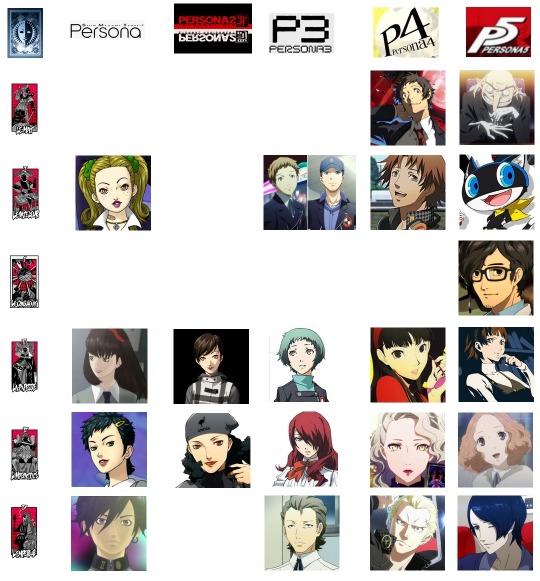

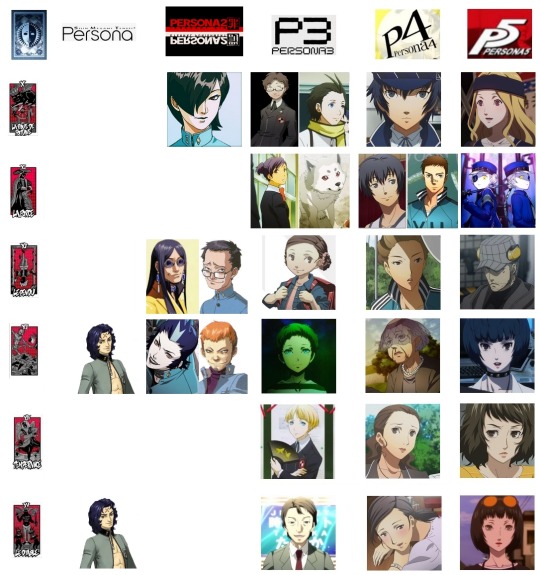


All relevant info under the cut! (There be spoilers)
UPDATED ARCANA
All confidants/social links from P3, P4, and P5. Also included the arcana for P1 and the P2 duology because I can never remember who’s what. Arcana did not exist in this framework for Shin Megami Tensei If...
FOOL
P3: - (technically this is SEES, but I did not include groups) (also the protagonists for P3-5, Elizabeth, and Aigis)
P4: Tohru Adachi. (Adachi technically holds two arcana, though he starts as one and becomes the other: the Hunger Arcana, which does not exist in a standard tarot deck, but comes from the Thoth deck. I did not include it because he switches from one arcana to the other)
P5: Igor
MAGICIAN
P1: Yuka Ayase
P3: Kenji Tomochika (male protagonist)/Junpei Iori (female protagonist)
P4: Yosuke Hanamura
P5: Morgana
COUNCILLOR
P5: Takuto Maruki (does not exist in standard tarot, from El Gran Tarot Esoterico) (Royal only)
HIGH PRIESTESS
P1: Maki Sonomura
P2: Maki Sonomura
P3: Fuuka Yamagishi
P4: Yukiko Amagi
P5: Makoto Niijima
EMPRESS
P1: Yukino Mayuzumi
P2: Yukino Mayuzumi
P3: Mitsuru Kirijo
P4: Margaret
P5: Haru Okumura
EMPEROR
P1: Naoya Toudou (P1 protagonist)
P3: Hidetoshi Odagiri
P4: Kanji Tatsumi
P5: Yusuke Kitagawa
PRIEST
P5: Zenkichi Hasegawa (does not exist in standard tarot deck, from Thoth deck) (Scramble only, no art available for card at time of posting)
HIEROPHANT
P1: Kei Nanjo
P2: Kei Nanjo
P3: Bunkichi and Mitsuko
P4: Ryotaro Dojima
P5: Sojiro Sakura
LOVERS
P2: Lisa Silverman/Ginji Sasaki
P3: Yukari Takeba
P4: Rise Kujikawa
P5: Ann Takamaki
CHARIOT
P1: Masao Inaba
P3: Kazushi Miyamoto (male protag)/Rio Iwasaki (female protag)
P4: Chie Satonaka
P5: Ryuji Sakamoto
JUSTICE
P1: Hidehiko Uesugi
P2: Katsuya Suou/Hidehiko Uesugi
P3: Chihiro Fushimi (male protag)/Ken Amada (female protag)
P4: Nanako Dojima
P5: Goro Akechi
HERMIT
P3: Isako Toriumi (male protag)/Saori Hasegawa (female protag)
P4: Fox
P5: Futaba Sakura
WHEEL OF FORTUNE
P2: Jun Kurosu
P3: Keisuke Hiraga (male protag)/Ryoji Mochizuki (female protag)
P4: Naoto Shirogane
P5: Chihaya Mifune
STRENGTH
P3: Yuko Nishiwaki (male protag)/Koromaru (female protag)
P4: Kou Ichijo (protag joins basketball)/Daisuke Nagase (protag joins soccer)
P5: Caroline and Justine
HANGED MAN
P2: Baofu/Yasuo Inoe
P3: Maiko Oohashi
P4: Naoki Konishi
P5: Munehisa Iwai
DEATH
P1: Reiji Kido*
P2: Eikichi Mishina/Hiroki Sugimoto
P3: Pharos
P4: Hisano Kuroda
P5: Tae Takemi
TEMPERANCE
P3: Andre Laurent Jean Gerraux
P4: Eri Minami
P5: Sadayo Kawakami
DEVIL
P1: Reiji Kido* (Reiji is the only canonical non-protagonist to hold more than one arcana at the same time. He is both Death and the Devil in P1, and makes a minor appearance in P2, where he is still Death and the Devil. However I didn’t have enough space to squish him into the Death slot for P2)
P3: President Tanaka
P4: Sayako Uehara
P5: Ichiko Ohya
TOWER
P1: Takahisa Kandori
P2: Anna Yoshizaka
P3: Mutatsu
P4: Shu Nakajima
P5: Shinya Oda
STAR
P2: Ulala Serizawa
P3: Mamoru Hayase (male protag)/Akihiko Sanada (female protag)
P4: Teddie
P5: Hifumi Togo
MOON
P2: Maya Amano
P3: Nozomi Suemitsu (male protag)/Shijiro Aragaki (female protag)
P4: Ai Ebihara
P5: Yuuki Mishima
SUN
P2: Tatsuya Suou/Tatsuya Sudou
P3: Akinari Kamiki
P4: Yumi Ozawa (protag joins drama)/Ayane Matsunaga (protag joins band)
P5: Toranosuke Yoshida
JUDGEMENT
P1: Eriko Kirishima
P2: Eriko Kirishima
P5: Sae Niijima
AEON
P3: Aigis (does not exist in standard tarot, from Thoth deck)
P4: Marie (does not exist in standard tarot, from Thoth deck) (Golden only)
FAITH
P5: Kasumi/Sumire Yoshizawa (does not exist in standard tarot, from Visconti-Sforza deck) (Royal only)
HOPE
P5: Sophia (does not exist in standard tarot, from Visconti-Sforza deck) (Scramble only, no art available at time of posting)
*~*~*~*~*~*~*~*~*~*~*~*~*~*~*~*~*~*~*~*~*~*~*~*~*
ALL PLAYABLE AND IMPORTANT CHARACTERS
PERSONA 5 SCRAMBLE: THE PHANTOM STRIKERS
Sophia, Zenkichi Hasegawa
NOTE: P5S was released in Japan in February 2020.
PERSONA 5 THE ROYAL
Kasumi Yoshizawa
TRIVIA: Kasumi’s real name is Sumire. She assumed the identity of her twin sister Kasumi after Kasumi’s tragic death.
PERSONA Q2
Hikari
PERSONA 5
Ren Amamiya / Akira Kurusu, Ryuji Sakamoto, Ann Takamaki, Morgana, Yusuke Kitagwa, Makoto Niijima, Futaba Sakura, Haru Okumura, Goro Akechi
TRIVIA: The protagonist is named Ren Amamiya in the anime and Akira Kurusu in the manga. Futaba’s codename is Navi in Japanese and Oracle in English.
PERSONA 4 ARENA ULTIMAX
Labrys, Sho Minazuki
PERSONA 4 / PERSONA 4 THE GOLDEN
Yu Narukami / Souji Seta, Yosuke Hanamura, Chie Satonaka, Yukiko Amagi, Kanji Tatsumi, Rise Kujikawa, Teddie, Naoto Shirogane
TRIVIA: The protagonist is named Yu Narukami in the anime and Souji Seta in the manga. Teddie is named Kuma in Japan.
PERSONA Q
Zen, Rei
PERSONA 3 FES
Metis
PERSONA 3 PORTABLE
Minako Arisato / Hamuko Yuki / Kotone Shiomi
TRIVIA: The female protagonist has no canon name, but has been called Minako Arisato and Hamuko Yuki by fans, and Kotone Shiomi in the stage play.
PERSONA 3
Minato Arisato / Makoto Yuki / Sakuya Shiomi, Yukari Takeba, Junpei Iori, Mitsuru Kirijo, Akihiko Sanada, Fuuka Yamagishi, Aigis / Aegis, Koromaru, Ken Amada, Shinjiro Aragaki
TRIVIA: The protagonist is named Minato Arisato in the manga, Makoto Yuki in the anime, and Sakuya Shiomi in the stage play. Aigis’s name is spelled Aegis in Japan.
PERSONA 2 ETERNAL PUNISHMENT
Maya Amano, Ulala Serizawa, Katsuya Suou, Baofu, Tatsuya Suou, Eriko Kirishima, Kei Nanjo
TRIVIA: Maya was a playable character in the first Persona 2 installment, as was Tatsuya. Eriko Kirishima and Kei Nanjo return from Persona 1.
PERSONA 2 INNOCENT SIN
Tatsuya Suou, Maya Amano, Lisa Silverman, Eikichi Mishina, Yukino Mayuzumi, Jun Kurosu
TRIVIA: Yukino Mayuzumi returns from Persona 1.
MEGUMI IBUNROKU PERSONA
Naoya Todo / Yuya Narumi / Jihei Suzakurin, Maki Sonomura, Masao Inaba, Kei Nanjo, Hidehiko Uesugi, Eriko Kirishima, Yuka Ayase, Reiji Kido, Yukino Mayuzumi
TRIVIA: The protagonist is only referred to as “the pierced boy” (Japanese)/”boy with earring” (English) within the games themselves; in the manga he is Naoya Todo, in the drama CD he is Yuya Narumi, and in the novel he is Jihei Suzakurin. Along with Maki, the protagonist makes a minor appearance in Persona 2, while Eriko, Kei, and Yukino return in P2 as playable characters once again.
SHIN MEGAMI TENSEI IF…
Tamaki Uchida, Nobu Akiyama / Jin Aoki, Reiko Akanezawa, Yumi Shirakawa, Shinji Kuroi, Ideo Hazama, Akira Miyamoto
TRIVIA: SMT If… was released only in Japan and is considered the originator of the Persona series. The series features a protagonist whose gender is decided by the player, something not seen again until P3P, though the female protagonist is canon in the games and the male protagonist is canon in the manga. Tamaki makes a cameo appearance in P1 and P2. The male protagonist is called Nobu Akiyama in both the manga and its sequel and Jin Aoki in the novel.
#persona 5#persona 5 scramble#persona 5 royal#persona 4#persona 3#persona 2#persona 1#shin megami tensei if#persona series#persona q#persona q2#confidants#arcana#p5r spoilers
62 notes
·
View notes